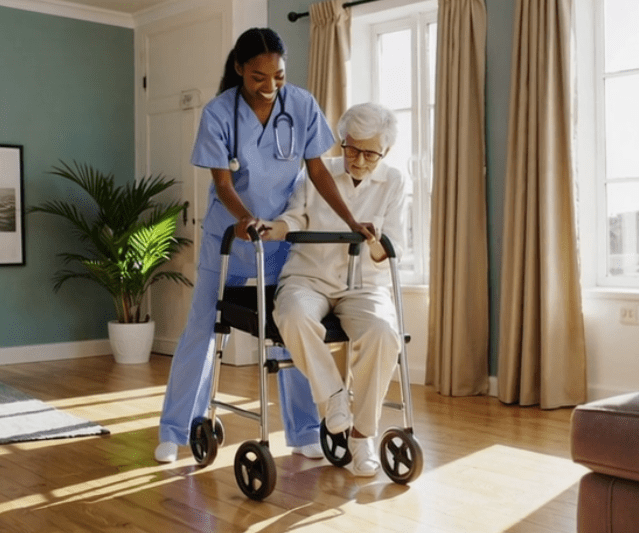Choosing the right in-home cardiac care provider for an aging parent or loved one is a crucial decision that directly impacts their health, safety, and quality of life. Family members play an essential role in evaluating available care options to ensure the best possible care. Here is a comprehensive guide to help you identify key considerations when selecting in-home cardiac care for your parent.
Qualified and Experienced Care Providers
The first consideration should always be the qualifications and experience of the caregivers. Ensure that potential providers have specialized training in cardiac care, relevant certifications, and substantial practical experience. Experienced caregivers are better equipped to manage the complexities of cardiac conditions effectively and respond appropriately to medical emergencies.
Personalized Care Plans
A quality in-home cardiac care provider should offer personalized care plans tailored specifically to your parent’s unique medical and lifestyle needs. Ask prospective providers how they develop and implement these plans. Personalized care plans should address medical, dietary, physical, emotional, and social aspects to provide comprehensive support.
Communication and Coordination
Effective communication between caregivers, patients, and family members is critical. Evaluate how the provider facilitates regular updates and coordinates care with your parent’s primary healthcare team. Regular, transparent communication ensures that family members remain informed and involved, providing peace of mind and enhancing care consistency.
Comprehensive Medical Monitoring
Continuous and thorough medical monitoring is essential for cardiac patients. Confirm that the provider offers detailed monitoring of vital signs such as heart rate, blood pressure, oxygen levels, and overall cardiovascular health. Consistent monitoring helps quickly identify potential issues and ensure timely intervention, significantly improving patient outcomes.
Medication Management Capabilities
Proper medication administration and management are vital components of cardiac care. Ensure that caregivers have robust procedures to administer medications accurately and manage prescription renewals and adjustments. Inquire about their systems for preventing medication errors and maintaining detailed records to guarantee safety and compliance.
Emergency Preparedness and Responsiveness
Ask providers about their emergency response procedures, training in CPR, and use of emergency medical devices such as AEDs. Caregivers should be well-prepared to handle emergencies, with clear protocols for quickly contacting medical services and family members. Effective emergency response planning significantly enhances patient safety.
Nutritional and Dietary Support
Proper nutrition significantly impacts cardiac health. Evaluate how the in-home cardiac care provider collaborates with dieticians or nutritionists to support your parent’s dietary needs. Caregivers should provide meal planning, preparation, nutritional education, and ongoing dietary assessments, promoting heart-healthy nutrition.
Emotional and Social Support
Cardiac conditions often cause emotional and psychological stress. Quality in-home cardiac care includes robust emotional support systems. Providers should demonstrate skills in offering companionship, addressing emotional concerns, and providing psychological counseling. Emotional and social support significantly enhances overall health and recovery.
Family Involvement Opportunities
In-home cardiac care providers should actively encourage family involvement. Look for providers that offer opportunities for family members to participate in care planning, training in care management, and regular family meetings to review progress. Active family involvement promotes better patient outcomes and improved quality of life.
Flexibility and Convenience
Flexibility in care schedules is essential for accommodating your parent’s lifestyle and preferences. Quality providers should be adaptable, working around your family’s routines and ensuring minimal disruption to daily life. Convenience and flexibility greatly improve patient satisfaction and care effectiveness.
Safety and Home Assessment
A thorough home safety assessment is necessary to ensure a secure environment for your parent. Confirm that caregivers perform comprehensive evaluations and suggest necessary modifications such as grab bars, non-slip mats, adequate lighting, and emergency alert systems. These precautions significantly reduce risks of falls and accidents.
References and Testimonials
Always ask for references and testimonials from current or previous clients. Reviews from other families provide valuable insights into the provider’s reliability, professionalism, and quality of care. Testimonials help you make informed decisions based on the experiences of others who faced similar choices.
Financial Transparency and Cost-Effectiveness
Clearly understand the provider’s fees, billing practices, and any additional costs. Transparency in financial matters helps avoid unexpected expenses and allows families to plan effectively. Choose a provider that offers clear, reasonable, and justified cost structures, ensuring affordability without compromising care quality.
Selecting the right in-home cardiac care provider for your parent involves carefully considering qualifications, personalized care plans, communication practices, medical monitoring, medication management, emergency preparedness, nutritional support, emotional care, family involvement, flexibility, home safety, and financial transparency. Taking these factors into account ensures your loved one receives the highest quality cardiac care in the comfort and security of their own home, significantly enhancing their health outcomes and overall quality of life. Contact First at Home today to learn how we can help.


